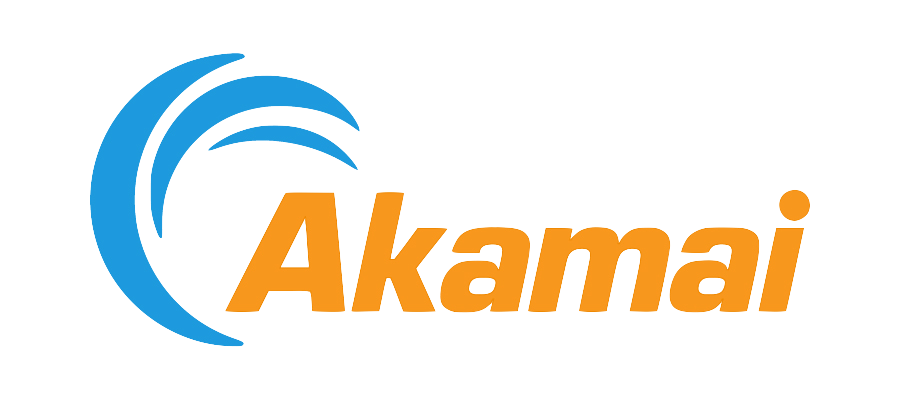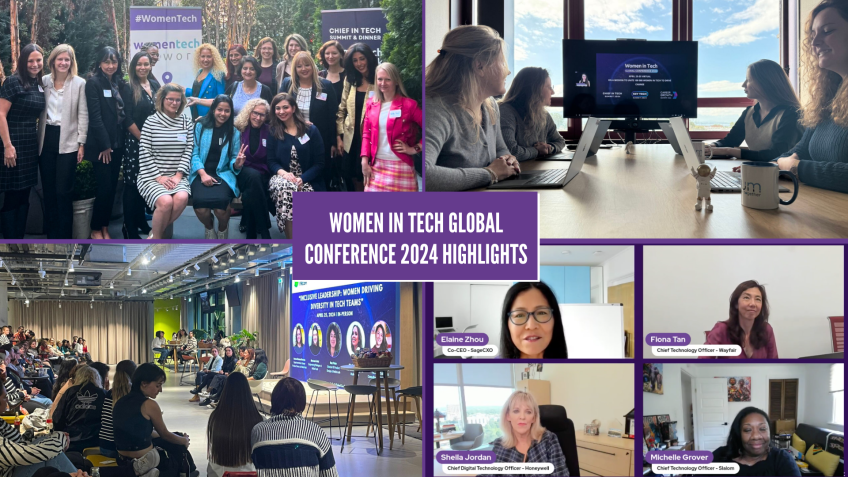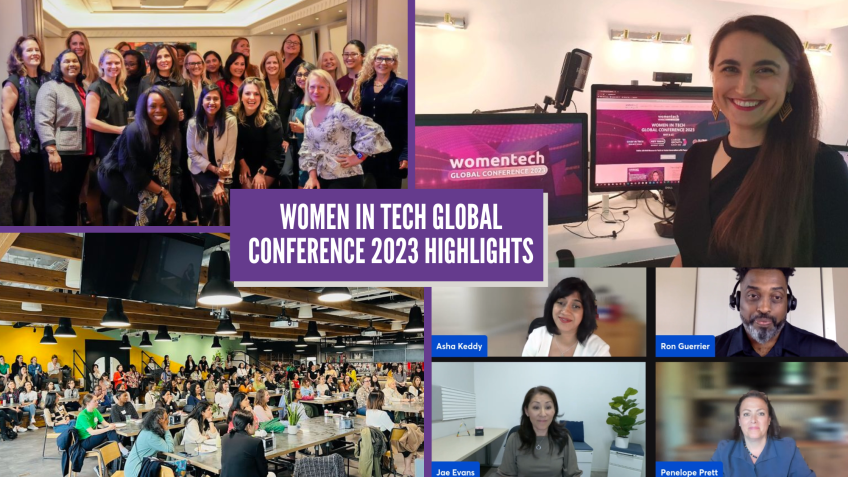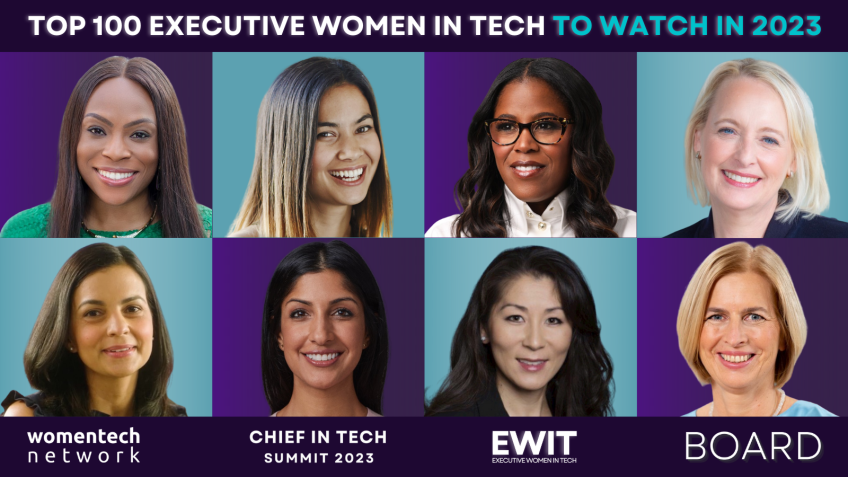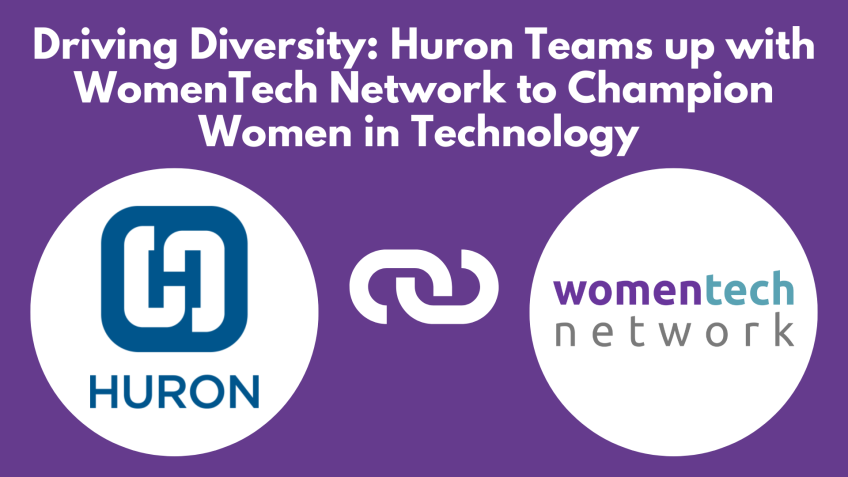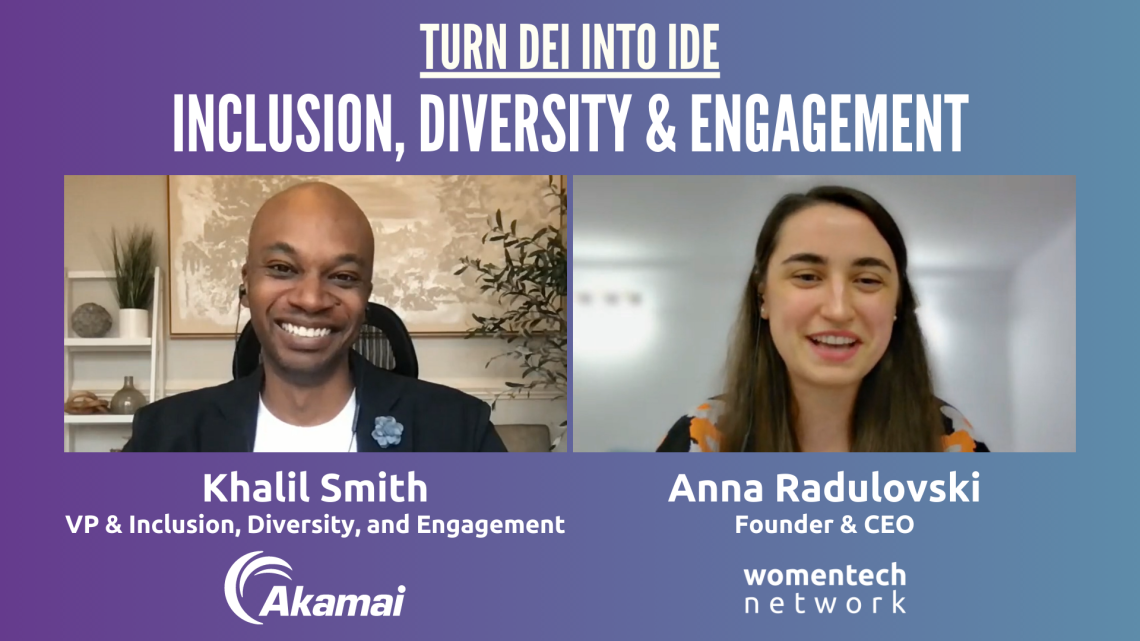
Companies commonly begin their Diversity, Equity and Inclusion (DEI) journey with a single training session or lofty goals, but they lack the long-term vision to make meaningful progress. WomenTech Network sought best practices across various organizations to help companies initiate or strengthen their Employee Resource Groups (ERGs). Our Founder & CEO Anna Radulovski sat down with Khalil Smith, VP & Inclusion, Diversity, and Engagement to learn more about Akamai’s best practices.
“Diversity and Inclusion is about good leadership. It is really difficult to be a good leader if you can only lead people who are like you, or people who have come from your type of background, or people that believe the same thing you believe.”
- Khalil Smith, VP, Inclusion, Diversity, and Engagement at Akamai Technologies
Who are Akamai Technologies
“Most people haven't heard of Akamai but have probably experienced it. If one uses the Internet on a semi-regular basis, Akamai is running 30 to 40% of the Internet's traffic and securing major institutions from cyber threats,” says Khalil.
Akamai has 10,000 people all across the world and the company’s purpose is to make life better for billions of people billions of times a day. They do that by launching their ERGs, launching Akamai Technical Academy, a program that has been the subject of a Harvard Business School case, offering its employees various benefits like wellness days, supporting STEM education, and incorporating DEI in their company policies all the way from the hiring process to employee retention.
“The thing that we want to achieve is like drawing back a bowstring, pointing it, and then releasing it, unleashing all of this incredible talent, we're fortunate to have and welcome on board”, shares Khalil.
DEI does not suffice. We need IDE (Inclusion, Diversity & Engagement)
According to Khalil, Inclusion & Diversity do not necessarily equal Engagement. His role encompasses engagement too, which means adding more resources, an allocated budget, and headcount, and really being focused on the intersection of what an inclusive and diverse team should achieve as a bigger goal.
“Inclusion is wonderful, obviously, making people feel connected, making them feel they belong somewhere. Diversity and representation of underrepresented talent and making sure that we're bringing out the best of various folks is also great. And yet you can have incredibly inclusive and incredibly diverse teams that aren't motivated to see the organization succeed", says Khalil.
Data. The Answer to Effective ERGs
One of Akamai’s performance indicators is based on their Pulse Survey data. The survey is run quarterly and entails questions such as what's going well, how included their employees feel, do you feel about the future of the organization etc. The collected data allows Akamai to really keep track of employees’ feelings & attitudes throughout the year.
Further to that, Akamai partners with Culture IQ which helps them benchmark against hundreds of other organizations. Akamai’s inclusion scores tend to be really high, 86% according to the company’s employee engagement survey, and tend to be high across the vast majority of their demographics. This data forms part of maintaining their engagement score.
DEI-friendly Job Descriptions
Akamai has implemented a series of changes to enhance their inclusion policies, starting from basics such as the job descriptions disseminated during the hiring process. Their goal was to build the criteria in a clear way that will attract as many talented applicants as possible. Akamai reduces the barrier to applying for jobs, as research shows that some women won't apply for roles that they feel like they don't meet all of the listed criteria.
“So what essentially happens is that job descriptions list certain skills as required, however, they also state “We're to teach you this thing““, points Khalil out and underlines the importance of making job descriptions inclusive and accessible.
DEI-friendly Interview Process
“We have gender and ethnic representation in place so that people can see what it's going to be like to work here”, shares Khalil. The company makes sure that the panels of interviewers are representative of employees, clients, and the global population.
Akamai is devoted to bringing in underrepresented talent not only at the lower levels of our organization. Khalil mentions there are companies that count on diverse talent solely for entry positions which leads to the pyramid effect. “There are companies which have a lot of diversity at the lower levels of their organization and then it gets more and more homogeneous, the higher you go.”
Flexibility and Employee Engagement
We see more and more the statement “The future is flexible” across the media. This belief is also supported by Akamai’s work culture. They keep both remote and office work as open options and never make people feel like there's an obligation for one or the other. Flexibility is vastly dependent on trusting employees. Some C-level people still hold on to the belief that to trust people you need to see them every day. What will that mean for a multinational global company? Khalil advises instead of creating bias and inconsistency for teams (which some managers in other companies do), encourage employees to choose their most productive environment.
Diversity vs. Retention
Women at Akamai hold approximately 25% of leadership roles. Khalil shares that they still haven’t reached their desired percentage, which is due to talent not turning over that often. He refers to it as a double-edged sword, as on the one hand, Akamai retains numerous talented people who wish to stay on board, and on the other hand, employee retention leads to a little less opportunity to change the demographics at C-level.
Getting your ERGs off the ground in 3 steps:
Step number one is to speak to your DEI officer or alternatively - find your go-to person and bring up the opportunity to create or strengthen your ERG. Or become an ERG leader yourself!
It is good to agree on:
- What is the aim (get more women on board, bring more diversity to C- level)
- What are the biases to resolve
- How often to meet
- How to collaborate
- Allocate a budget
Step two is to start small and identify milestones.
Step three is to bring together the ERG “coalition” and make the opportunity known across the company.
Continuous Engagement of ERGs
ERGs equal the commitment to employees.
“If we start ERGs, invest in them, and then stop them, we are sending a message to employees. We cared about this for a while when it was in vogue and then - not anymore!”
ERGs should be maintained even when nobody is watching according to Khalil. He shares best practices to leverage continuous engagement:
- Every year each ERG must get a budget
- ERGs elect their own leaders and set priorities (speakers they want to bring, celebrations they wish to invest in, etc.)
- Senior leader, VP or C-level person who will provide strategic guidance, feedback & advice on visibility.
- ERG leaders to meet monthly
- Outline a plan that includes everyone’s participation (celebrations must be driven by employees, see what is important to them)
- Embrace the idea of a growth mindset & nurture DEI when nobody is forcing you
- Instill the “how can we do it?” culture instead of “Can we do it?”
Read further on the benefits of ERGs for women in tech.
IDE Start early on
Akamai has provided grants of over $3,000,000 to support STEM education and other causes related to digital equity and inclusion. An interesting initiative Khalil tells us about is STEM from Dance, which is dedicated to igniting girls (especially girls of color) to get interested in STEM by becoming confident and creative through dancing. Akamai believes that girls can be strongly encouraged to be innovators, and technologists, through dancing which brings not only joy but also confidence.
IDE Done & Dusted: Myth Debunked
“From my own perspective, I don't think there's ever a moment that you're done when it comes to IDE”, concludes Khalil.
He puts forward the argument that with the external environment constantly changing and adjusting, people naturally learn more about themselves and others, leading to our world becoming more multicultural: as discussion progresses, various forms of diversity and disability emerge to the surface. Companies must try to accommodate them and ERGs can serve an essential purpose here.
It is good to have a shared understanding of what ERGs are trying to accomplish, however, the work is never done. Khalil calls this “a catalyst” which is not a bad thing, but the change that makes people and companies become more resilient.
Check out Akamai’s profile to learn more and explore career opportunities.
You can view the full interview below.



